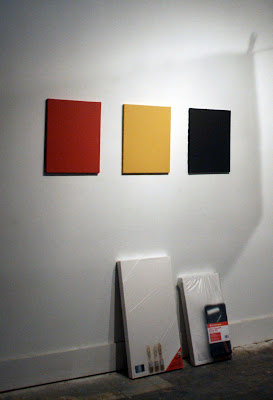 A 1 square inch deed of land in Texas purchased for the new Socialist Colony.
A 1 square inch deed of land in Texas purchased for the new Socialist Colony.
 Land: Four Case Studies
Land: Four Case Studies
These four sites in North America were involved with the giveaway of marginal, unbuildable land as advertising promotions, or the sale of uninhabitably small parcels (2" or smaller). Surprisingly, in some cases this free or cheap land did gain in value, was buildable, had oil found underneath, or was eventually resold at a profit.
With the exception of larger lots in Huntington Beach and Newark, where the land, while 'marginal' and oddly shaped, was buildable, most landowners were unable to make use of their micro-holdings, or afford to purchase significant adjacent parcels to expand them to usable size. Most of the land was never occupied, and some land was eventually recuperated by tax default, unbeknownst to the deed holders.
Developers, cities, and other entities that could afford to manage fragmented title and clear tax issues often bought the parcels in bulk, sometimes using lawsuits to quiet title, or condemning lands whose owners would not agree to sell. This happened in Newark (now a shopping mall) and at the Lazy C Ranch (first a golf course, now a subdivision), and at the Klondike Big Inch Land Co. (now the world's northenmost golf course). It also signals the move of lands once thought of as cheap, marginal, and distant wildernesses, to nearby and profitable.
The enthusiasm for and fascination with the possibilities of marginally inhabitable places is still unchecked, whether in Gordon Matta-Clark's Fake Estates, recent Web 2.0 projects like Loveland, Detroit, failing towns offering free land to stayers, and current inch-of-land schemes. Along with enthusiasm for novelties of property, these places raise the issue of how land is transformed into property, and the dispossession that results from this transformation, as seen in the hopes of micro-land owners for the stability that property ownership confers in a land transformed to property, where all non-landowners are pre-dispossesed.

 Land: Four Case Studies
Land: Four Case Studies



